
By Dr Jayne Caudwell, Bournemouth University
The globalisation of football means it can now be found in most parts of the world. It is celebrated as the national sport in many countries. But, we forget that “football” actually means “men’s football”. It’s the same with other popular sports – our habit is to refer to basketball and women’s basketball, cricket and women’s cricket, ice hockey and women’s ice hockey. This naming places men’s football as the dominant universal and natural norm, while women’s football becomes the “other” version.
If we want a level football playing field, then “football” should be redefined by changing our reference to tournaments, championships and leagues to “men’s football” if that is what is being played. It’s time we started referring to the men’s football World Cup, just as we refer to the women’s football World Cup.
Women and girls have long been treated as second-class citizens in the many worlds of football, including playing, officiating, governing and spectating. And indeed, in the build up to the 2018 men’s World Cup, there was much discussion about racism and homophobia – but practically none about football, gender, sexism and misogyny.
The histories of the development of football in most countries around the world show that women and girls have been denied access to pitches, equipment, coaches, training, stadiums and financial support. These material opportunities are important because they enable and validate participation – and full football citizenship.

Finland takes on Austria in a qualifier for the 2019 Women’s World Cup. EPA
Media sport pages cover men’s sport. During the football season, the coverage is dominated by stories of men’s football. Women footballers seem to not exist. The sport press obliterates them.
But women and girls are playing, officiating, spectating and commentating on the game in ever increasing numbers around the world. The England women’s team outperforms the men’s team on the European and world stage. They are currently ranked ten places higher, in second position. And yet, the gender pay gap in football is atrocious.
Ignoring sexism
While Russia, as host of the men’s football World Cup 2018, has been criticised for its poor record in dealing with homophobic and racist abuse, nothing has been said about gender-based abuse or discrimination.
Instead, ahead of the men’s World Cup, Russian MPs have been arguing over whether Russian women should or should not have sex with visiting (presumably male) football fans. The UK Foreign Office released advice on race and LGBT concerns, but there’s nothing on how sexist chanting can make men’s football a hostile environment for women. You only need to look at the sexism experienced by doctor Eva Carneiro and assistant referee Helen Byrne in the men’s premier league to see how this plays out.
What’s more, many of the concerns about homophobia and racism at the men’s World Cup stem from wider cultural issues in Russia. The same problems are evident with sexism and misogyny, yet they are curiously absent from the discussion when it comes to football. Cultural problems that affect men extend into the sporting arena, but not those that affect women.
In 2017, the Russian parliament passed legislation loosening laws on domestic violence. Russian women who support the #MeToo movement have come up against draconian assembly laws that say only one person is permitted to make a public protest.
There are no campaigns in international men’s football that aim to stop sexism, or call for anti-sexism and an end to gender-based violence.
Meanwhile, the women and girls who have fought hard to play football often encounter negative responses from the general public and from the media. Sport sociologists have found that sportswomen are trivialised, sexualised and experience symbolic annihilation – they simply don’t exist in images of the sport. A recent poster depicting Iranian fans is a prime example. Not a single female face features.
Women’s and girls’ sporting achievements are reduced as a result of ridicule. Their bodies are considered sexual objects rather than for playing sport. Former FIFA president Sepp Blatter’s comment that women should play in tighter shorts to attract more fans to the game is a classic example of this. More recently, feminist author Laura Bates challenged FIFA for describing player Alex Morgan as “easy on the eye and good looks to match” as well as the FA for tweeting about “lionesses go back to being mothers, partners and daughters” after playing in the women’s World Cup.
It’s easy to imagine that this men’s World Cup in Russia will continue to disregard gender, sexism and misogyny. And yet, sport, specifically football, has potential to incite change, and reform.
Renaming to men’s football is an easy and simple step in the direction towards equality. We may as well start with the men’s World Cup 2018.
Jayne Caudwell, Associate Professor Leisure Cultures, Bournemouth University
This article was originally published on The Conversation. Read the original article.




 The research into sensitive topics (RIST) project has been designed to explore the impact of researching sensitive topics on the researcher. This project, funded by BU pump priming, has interviewed researchers who have undertaken research on sensitive or challenging topics such as child abuse, sex work, and domestic abuse.
The research into sensitive topics (RIST) project has been designed to explore the impact of researching sensitive topics on the researcher. This project, funded by BU pump priming, has interviewed researchers who have undertaken research on sensitive or challenging topics such as child abuse, sex work, and domestic abuse.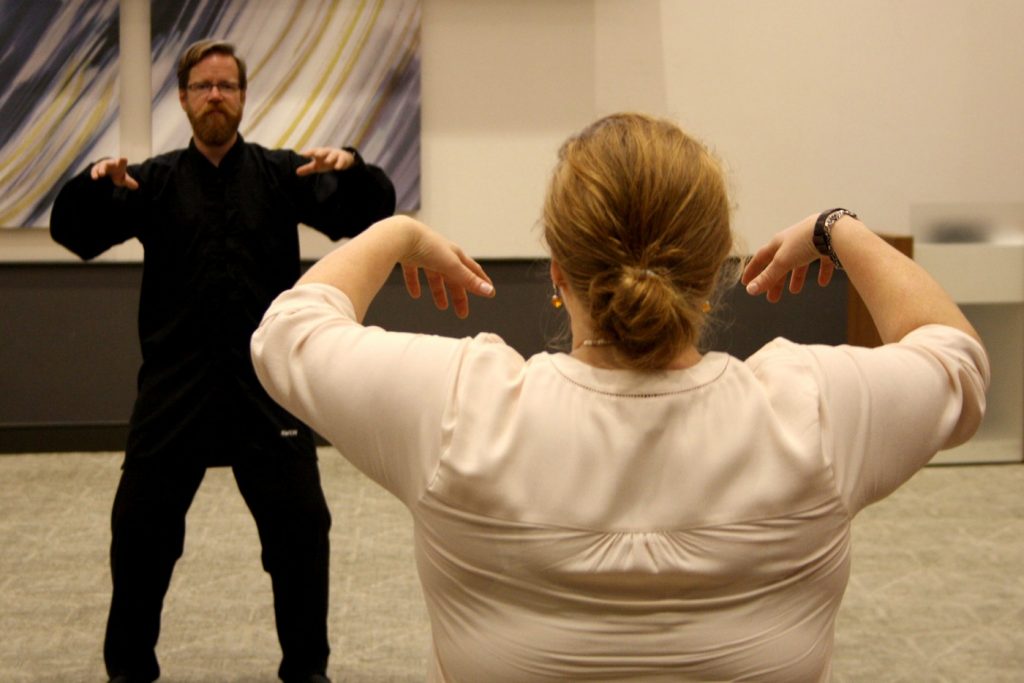

 Dr Holly Crossen-White has had a conference paper accepted for National Programmes Conference: Museums and Digital Memory Conference to be held at the British Museum in September. The paper will be presented with Dr Trudie Cole, Head of Access and Participation, The National Museum of the Royal Navy. Trudie and Holly have previously worked on several research projects related to the use of digital archives and this gives them opportunity to apply their findings within the context of collections held by the National Museum of the Royal Navy. Holly’s research interest in digital archives arose through her PhD which explored the hidden history of illicit drug taking during the early twentieth century. Holly has published on the ethical issues of undertaking research using digital archives and has been awarded Faculty Seedcorn Funding with her colleague Dr. Angela Turner-Wilson for some of this research work.
Dr Holly Crossen-White has had a conference paper accepted for National Programmes Conference: Museums and Digital Memory Conference to be held at the British Museum in September. The paper will be presented with Dr Trudie Cole, Head of Access and Participation, The National Museum of the Royal Navy. Trudie and Holly have previously worked on several research projects related to the use of digital archives and this gives them opportunity to apply their findings within the context of collections held by the National Museum of the Royal Navy. Holly’s research interest in digital archives arose through her PhD which explored the hidden history of illicit drug taking during the early twentieth century. Holly has published on the ethical issues of undertaking research using digital archives and has been awarded Faculty Seedcorn Funding with her colleague Dr. Angela Turner-Wilson for some of this research work. Application Deadline: Wednesday 12 September 2018 (17.00 UK Time)
Application Deadline: Wednesday 12 September 2018 (17.00 UK Time)

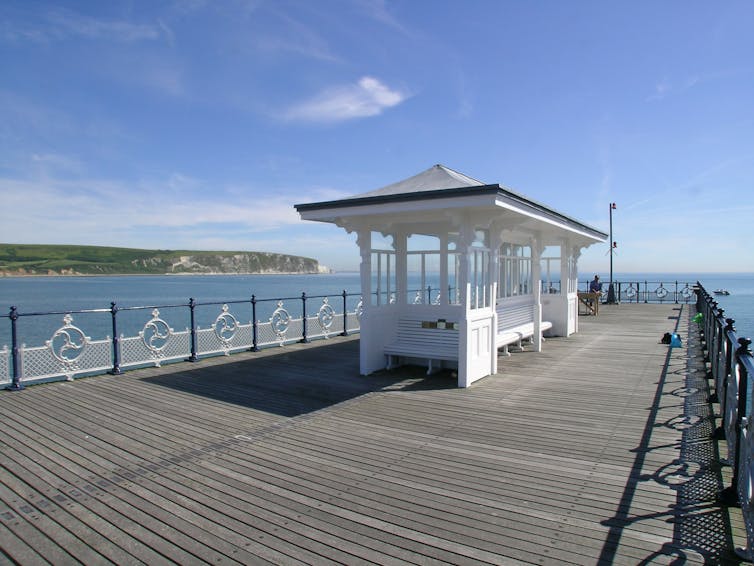





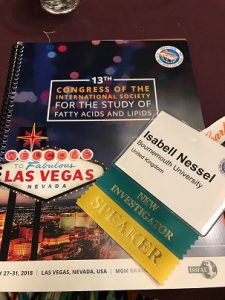
 Methodology and Ketoneurotherapeutics. In between, well-known researchers in the field presented their research in plenary talks. Dr Michael Crawford obtained an omega-3 research award and Dr Maria Makrides was awarded with the Alexander Leaf Award. Her presentation entitled “Standing on the shoulders of giants: great women role models, mentors and advocates” was really inspiring.
Methodology and Ketoneurotherapeutics. In between, well-known researchers in the field presented their research in plenary talks. Dr Michael Crawford obtained an omega-3 research award and Dr Maria Makrides was awarded with the Alexander Leaf Award. Her presentation entitled “Standing on the shoulders of giants: great women role models, mentors and advocates” was really inspiring.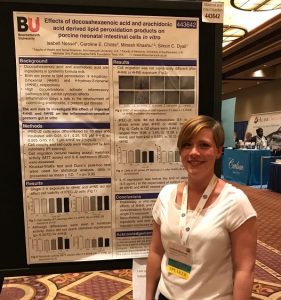 banking practices and recommendations for improvement”, presenting the results of our UK Milk Bank survey, which is now extended internationally. Furthermore, I had two posters displaying our work on preterm formula milk storage conditions and lipid degradation; and the effects of lipid degradation products on intestinal cells in vitro. These presentations gave me the possibility to position myself in the fatty acid research world and to make valuable contacts.
banking practices and recommendations for improvement”, presenting the results of our UK Milk Bank survey, which is now extended internationally. Furthermore, I had two posters displaying our work on preterm formula milk storage conditions and lipid degradation; and the effects of lipid degradation products on intestinal cells in vitro. These presentations gave me the possibility to position myself in the fatty acid research world and to make valuable contacts.
 One week to go to find out more about education, practice and research at the Humanising Care, Health and Wellbeing conference 21-22 June 2018
One week to go to find out more about education, practice and research at the Humanising Care, Health and Wellbeing conference 21-22 June 2018

 On the second and third days, many of UV’s central Service Units (equivalent to our Professional Services departments) provided job shadowing, workshops and exchange activities. I visited the Research Support & Career Development service unit to give a presentation about BU and RKEO; and shared common challenges and professional best practice with UV staff. I had many informative discussions with the Deputy Head of Research Support, National Funding officers, International Funding officers, Technology Transfer officers and the Systems officer. I also met with the Legal officers who sat within this service unit. I know that the outcome of our discussions will lead to implementation of practice ideas in both Universities’ research support offices.
On the second and third days, many of UV’s central Service Units (equivalent to our Professional Services departments) provided job shadowing, workshops and exchange activities. I visited the Research Support & Career Development service unit to give a presentation about BU and RKEO; and shared common challenges and professional best practice with UV staff. I had many informative discussions with the Deputy Head of Research Support, National Funding officers, International Funding officers, Technology Transfer officers and the Systems officer. I also met with the Legal officers who sat within this service unit. I know that the outcome of our discussions will lead to implementation of practice ideas in both Universities’ research support offices.














 BU Professor has been invited to a series of plenary and invited lectures.
BU Professor has been invited to a series of plenary and invited lectures.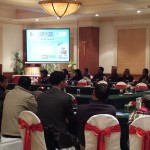 Research reaching non-academic audiences
Research reaching non-academic audiences April’s Café Scientifique – Should we help machines understand and respond to our emotions?
April’s Café Scientifique – Should we help machines understand and respond to our emotions?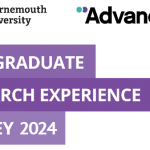 Postgraduate Research Experience Survey (PRES) 2024 – 2 WEEKS LEFT
Postgraduate Research Experience Survey (PRES) 2024 – 2 WEEKS LEFT Working with The Conversation: online training session – Wednesday 8th May
Working with The Conversation: online training session – Wednesday 8th May Apply for up to £1,000 to deliver an event and take part in a national festival of public engagement with research
Apply for up to £1,000 to deliver an event and take part in a national festival of public engagement with research MSCA Postdoctoral Fellowships 2024
MSCA Postdoctoral Fellowships 2024 Horizon Europe News – December 2023
Horizon Europe News – December 2023